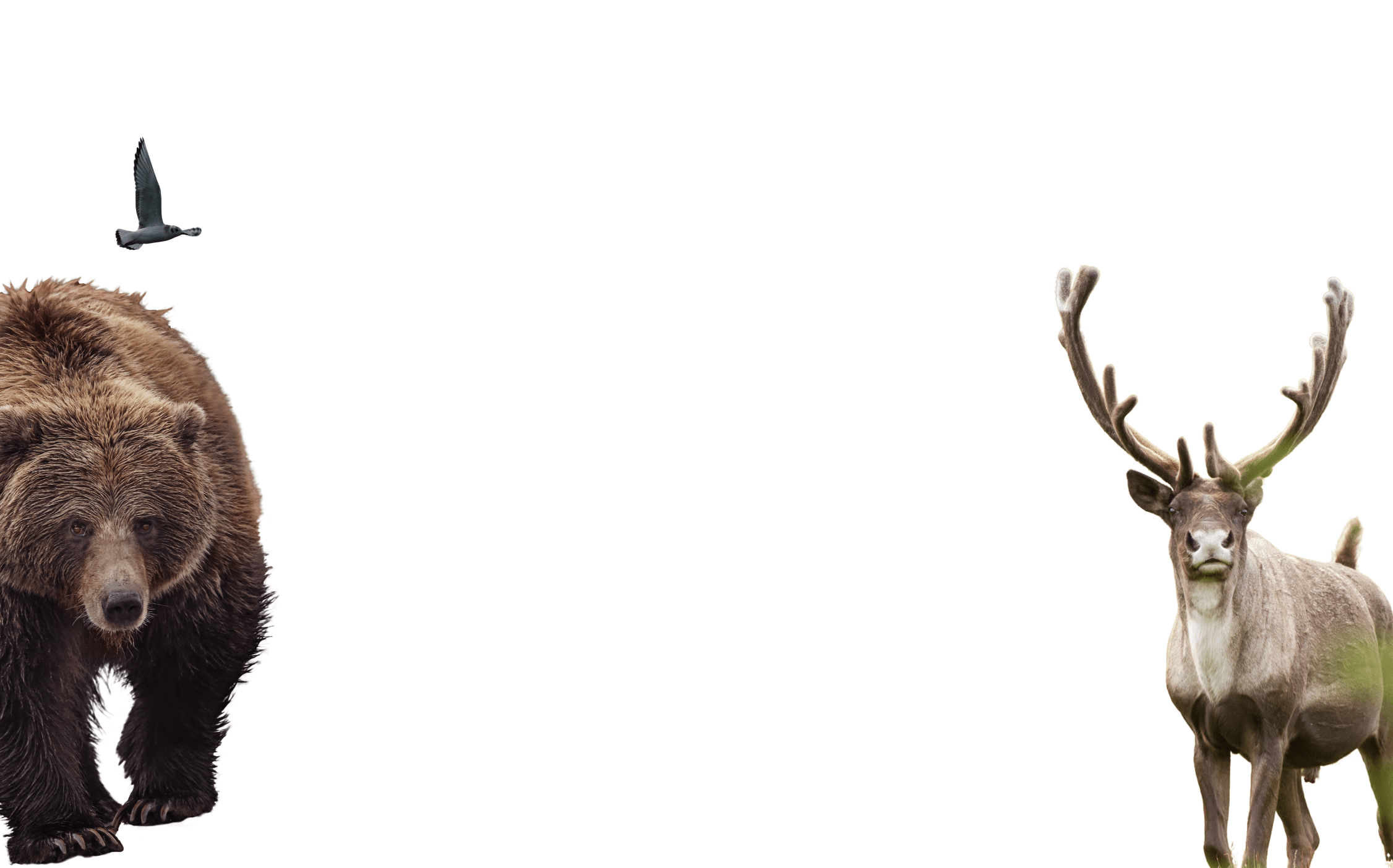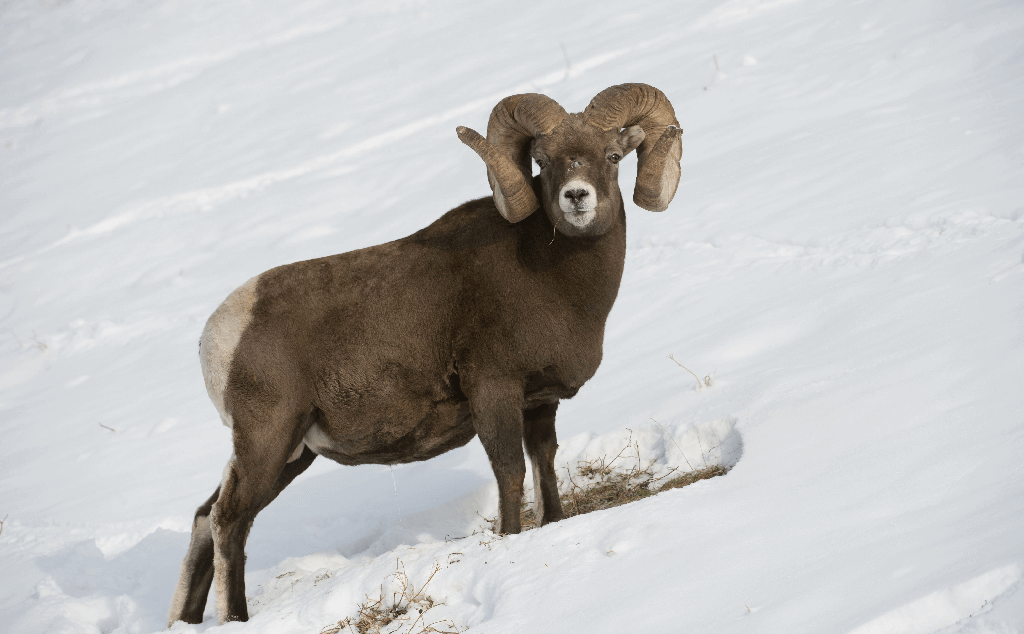
Where’s the science? In Alberta, feelings rather than facts inform recent hunting regulations
February 3, 2025
- •
- •
- •
This past year has been a blow to wildlife.
By Kennedy Halvorson
Read the PDF version here.
This past year has been a blow to wildlife.
I’ll start with female cougars. As per the quotas announced in November 2023, at the onset of 2023-2024’s hunting season, just one could be hunted in each of Alberta’s 32 Cougar Management Areas. Fast forward to March 20, 2024, when without notice, the quotas were updated and raised a staggering 125 percent, from 32 possible harvests to 72. When AWA requested information on how the sudden decision was made, the Minister of Forestry and Parks Todd Loewen said it was because some stakeholders thought that the cougar population was getting too high and this caused unwanted predation on caribou, bighorn sheep, and other big game species.
“As the species’ range expands into new, mostly human-dominated landscapes, there are concerns for continued public safety regarding cougars,” Loewen said
This set off immediate alarm bells for us. Cougars’ natural range has always encompassed almost the whole of Alberta, including our most populated centres. They haven’t expanded into our territory; humans are ever encroaching on theirs. Further, any predation by cougars is a natural part of the ecosystem — human hunters’ inability to handle the competition is no excuse to turn the gun on these big cats.
While wildlife management in the province is purportedly committed to taking a science-based approach, research overwhelmingly disagrees with these increased quotas. There is no evidence that hunting cougars accomplishes any of the outcomes typically sought by wildlife managers. In fact, trophy hunting has been found to increase human-cougar conflicts. It threatens to throw the ecological network — dependant on the large predators’ presence — out of balance, while also failing to reduce predation of livestock or keep human communities safer.
Then in June, an 18-year pause on hunting grizzly bears was resumed when Minister Loewen issued a ministerial order amending the Wildlife Act. The ministerial order permits the hunt of grizzly bears deemed to be involved in a loosely defined “human-bear conflict situations” by those with a “grizzly bear management authorization.” Alarmingly, this authorization is not reserved for experts, like specially trained fish and wildlife officers who previously were tasked with this, but for anyone over 18 years old who has or can obtain a recreational hunting licence.
This recipe for disaster has no basis in science. The removal of large predators like grizzlies, black bears, and wolves has been found time and time again to be both costly and ineffective at dealing with conflicts, and at times, even increasing the number of incidents, according to research. Hunting brown bears is also known to cause indirect, negative impacts on the larger population, including infanticide. It’s well established that predators are needed to balance herbivore populations, as without natural predation pressure, species like deer are associated with their own unwanted impacts on human activities. The absence of large predators (think of the famous Yellowstone wolves’ case-study) creates an unexpected and undesirable cascade of trophic effects.
Current best practices in wildlife management research recommend coexistence models, where the root cause of conflicts is addressed by managing human-behaviours. In the case of bears, food availability is the number one source of conflict. Coexisting with bears means making human spaces unattractive and food-scarce, while restoring and protecting their habitats. If they have sufficient food in the wild, their incentive to wander into human landscapes is greatly reduced; bears don’t want business with us either.
Even putting all this aside, grizzlies are designated as a threatened species. They have a provincial Recovery Plan. Their populations once ranged as far east as Manitoba, but the prairie population has long been extirpated due to settlement, land conversion, hunting, and various other human activities. The northwestern population is at risk of the same if it is not protected. Removal of any threatened species should be a last resort.
This year also ushered in unsubstantiated changes for mountain goats; they are now eligible to be hunted with a Minister’s Special Licence. Compared to other ungulates, mountain goats are incredibly sensitive to harvest. Growth within the small and remotely located populations of mountain goats in the province is considered poor and Alberta’s mountain goats already have a high risk of extinction without the additional stressor of hunting. This is a species that cannot withstand further exploitation.
Most recently, this fall came with changes for trapping fur-bearing species. Wolverines, fishers, lynx, and river otters became the latest victims of bad wildlife regulations. Previously, their trapping quotas were strictly limited. For wolverines, which are data deficient, meaning we don’t have enough information to confirm their population, only one per trapline could be harvested. But in the 2024-2025 season, all limits have been removed. The justification? To get more data on how many there are, particularly for wolverine populations.
Loewen told media that the previous quota system for these furbearers “was indefensible as it was not based on any real data or science.” Yet, this change in policy to lift the quota doesn’t seem to have been based on science either. Loewen told media that the policy change “came after extensive consultation with the Alberta Trapper’s Association.”
The precautionary principle in wildlife science is clear — if there is a potential threat to a species or its environment, even if not yet well-ascertained or established, all measures should be taken to reduce harm. If the minister is keen to determine the population numbers of wolverines and the like, many non-lethal monitoring methods exist. Aerial surveys, fur and scat collection, remote audio and video sensors, eDNA sampling, you name it, there are numerous ways to establish species populations; you just need the funding, expertise, and political will. Live capture and recapture studies have also been used to estimate species density in a given area, but how data collected from lethal trapping would be extrapolated to determine population size is unclear. It’s also alarming that a minister would characterize consultation as extensive after speaking to a single, economically-motivated group.
A common current throughout these decisions this year is a lack of inclusive consultation or even notice to interested parties. These drastic departures from science-based management and past precedents occur seemingly out of nowhere. The public should be aware when changes to wildlife management are even being considered, let alone this far after the fact. Further, those who do seem to be privy are those who would directly benefit from expanded hunting and trapping opportunities. Biases are inherent and unavoidable, which is why it is so important to include multiple and differing perspectives to find balance in decision-making.
To use the minister’s words, these new regulations are “indefensible.” AWA has made it clear in our communications with Forestry and Parks, and you should too. Please consider writing your own letter to the minister and include these facts. Alberta’s wildlife deserves more than feeling-based management.
